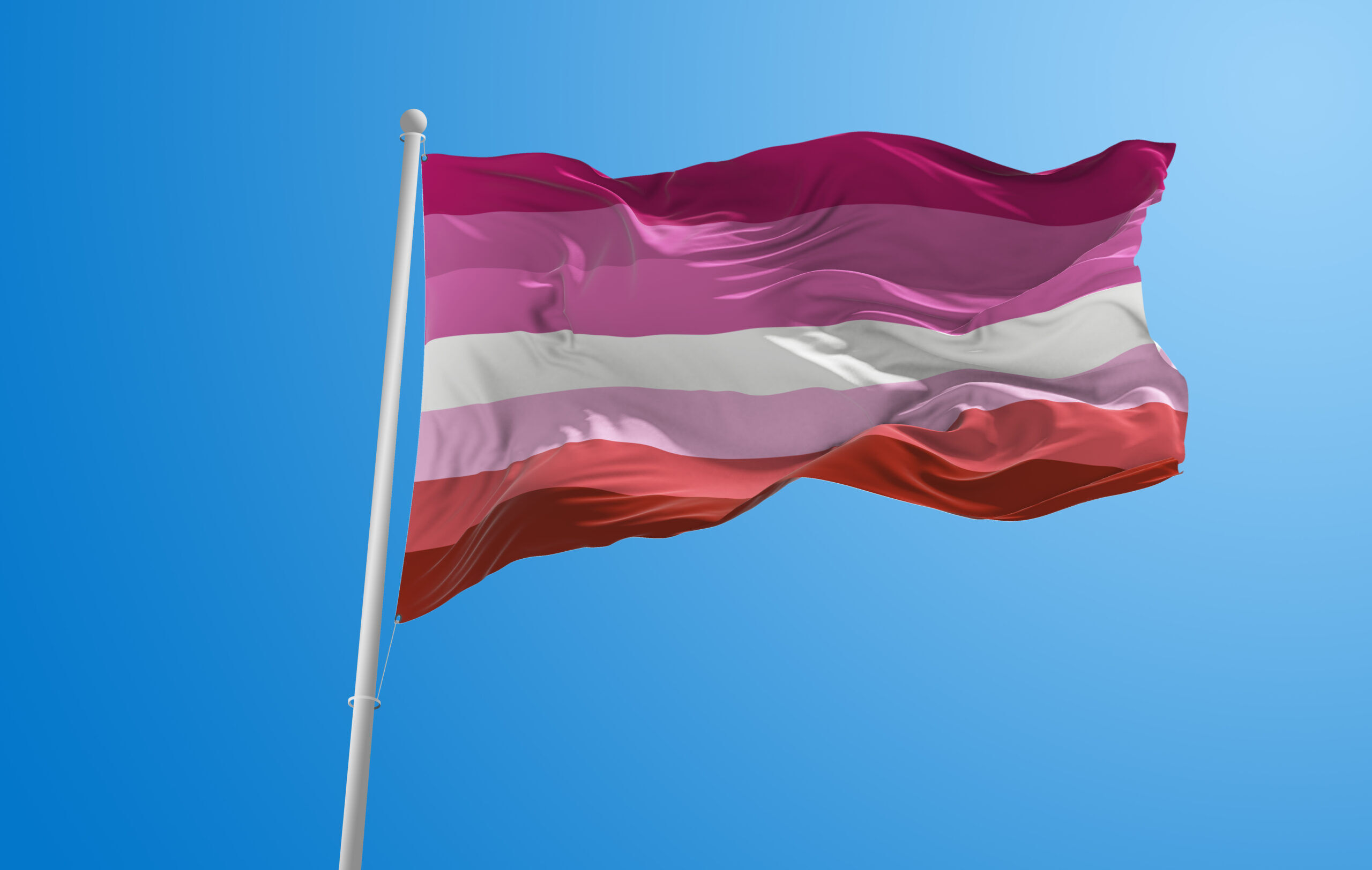Lesbianism refers to a homosexual woman or nonbinary person and relates to attraction to women. A lesbian woman is someone who is romantically and physically attracted to another woman. That being said, lesbianism also extends to non-men who love non-men. What better way to demonstrate your pride and appreciation for a community than to wave a flag? Like many other flags, the lesbian flag has gone through many iterations as well as many versions to better serve niche groups within the lesbian community.
If you think you might identify with being a lesbian or want to learn more about this community read about what it means to be a lesbian here.
The lesbian flag today
There are various versions of the lesbian flag, some used more often than others. Below you will find the most commonly used lesbian flag, this does not mean this is the only acceptable flag it just means it is the flag that is most inclusive of the lesbian community as a whole. You may have seen this flag hung up as a tapestry in someone’s room or perhaps waved at a pride festival.
The creator of this flag is Emily Gwen, who designed it in 2018. Considering this flag is inclusive of a multitude of individuals under the lesbian category this has become the most popular lesbian flag in use.
So what does this flag represent? As a whole, the unification of the lesbian community. Below is a breakdown of what the colors of this flag represent from top to bottom.
-
- Dark Orange: Gender non-conformity.
- Coral Orange: Independence.
- Light Orange: Community.
- White: Unique relationships to womanhood.
- Pink: Serenity and peace.
- Pastel Pink: Love and sex.
- Dark Pink: Femininity.
View this post on Instagram
Earlier versions of the lesbian flag
Because the lesbian community includes, femme presenting lesbians, masculine presenting lesbians, and a variety of other ways of interpreting the identity this has resulted in the creation of other flags. In addition, earlier versions of the flag we know and love today were the blueprints for more refined and specific design details.
The First Lesbian Flag:
One of the earliest versions of the lesbian flag was created in 1999 by graphic designer Sean Campbell. The inverted black triangle used on this flag represents the Nazi symbol used on women who did not conform to Nazi ideals during World War II. The double ax, also known as a labrys, is a symbol of feminism. Lastly the purple color is a nod to the poet Sappho who is often associated with the color because she described her lover wearing “a garland of violets.”
View this post on Instagram
The Lipstick Lesbian Flag:
Natalie McCray designed this flag in 2010 to better represent femme-presenting lesbians. The flag includes a variety of shades of pink and sometimes features a kiss mark. For a long time this flag was used as the standard lesbian flag despite its lack of inclusion. However, this flag sparked controversy when the creator of this flag posted problematic comments on a blog post offending many to the point that they stopped using the flag.
View this post on Instagram
The Butch Lesbian Flag:
View this post on Instagram
In 2016 the butch lesbian flag was created by Tumblr user dorian–rutherford as a reaction to the lipstick lesbian flag. The assortment of blue stripes that make up this flag are representative of non-femme lesbians. An alternative to the blue butch flag is the orange and yellow butch flag created by Mod Q in 2017. The flags are not as commonly used as some of the others mentioned, but still play an important part in butch lesbian visibility.
Want to learn more about being a lesbian?
Being a lesbian means you experience romantic, emotional, and physical attractions for women. Although “lesbian” is the most common term used to identify women loving women, identity is flexible. Oftentimes members of the community choose not to use labels as to not feed into the idea that labels are necessary to begin with.
There is no right or wrong way to be a lesbian. Some realize they might be a part of this community at a very young age and others take years. Sexuality is fluid, it changes and evolves as you become comfortable with yourself. If you resonate with these ideas or want to learn more click here.
Closing thoughts
The bottom line is representation matters. Flags are a necessary tool when it comes to representing a community, identity, or sexuality. Putting up a lesbian flag or wearing it on a t-shirt shows appreciation and pride for the community. This is not only important for community members who want to feel unified, but also for visibility purposes. The colors and symbols on a flag show the world what it means to be a part of that community and give everyone a chance to show their pride.
In addition, be sure to learn about the other identities that make up the LGBTQ+ community on our website or subscribe to the INTO newsletter to learn more.
Don't forget to share:
Help make sure LGBTQ+ stories are being told...
We can't rely on mainstream media to tell our stories. That's why we don't lock our articles behind a paywall. Will you support our mission with a contribution today?
Cancel anytime · Proudly LGBTQ+ owned and operated
Read More in Culture
The Latest on INTO
Subscribe to get a twice-weekly dose of queer news, updates, and insights from the INTO team.
in Your Inbox













